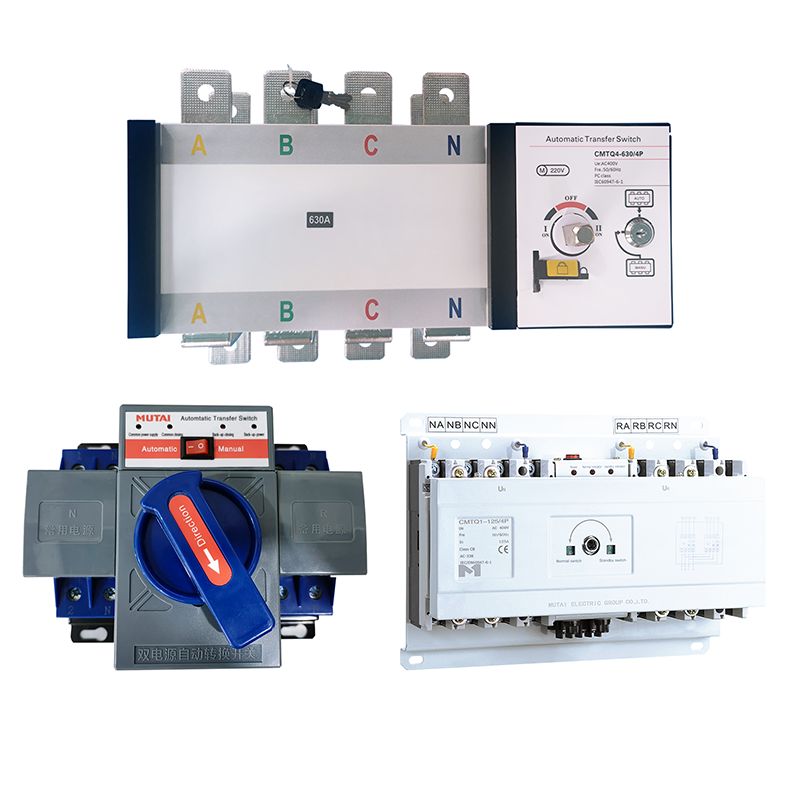Dual power automatic transfer switch, also known as automatic transfer switch, is a key component in the power distribution system. They are designed to seamlessly transfer power from one source to another in the event of a power outage or failure. The two most commonly used types of dual power automatic transfer switches are CB (miniature circuit breaker) type and PC (moulded case circuit breaker) type. Despite their similarities, there are also significant differences between the two. In order to make an informed decision when choosing between CB-class and PC-class switches, it’s important to understand their advantages, disadvantages, and differences.
First, let’s take a deeper look at the advantages of PC-level dual power automatic changeover switches. These switches are characterized by their integrated construction, including interlocking mechanism, contact arc extinguishing system and sturdy frame. A significant advantage is its simple structure. This means smaller dimensions, suitable for installations with limited space. In addition, PC-class switches are known for their fast switching operation, requiring less than 150 milliseconds to transfer power. This fast response ensures minimal disruption to connected devices.
On the other hand, PC-class switches also have their drawbacks. A significant disadvantage is the need for additional short-circuit protection. This requirement increases the overall manufacturing cost of the switch. Therefore, this aspect must be considered when selecting a PC-grade automatic transfer switch. Despite this shortcoming, PC-class switches remain a popular choice due to their compact size and fast power transfer capabilities.
Class CB dual power automatic transfer switches consist of two plastic cased circuit breakers, an interlocking transfer mechanism and a durable frame. The main advantage of Class CB switches is their built-in thermal overload and short circuit protection. This prevents excessive current flow and subsequent damage, ensuring the safety of connected equipment. Additionally, Class CB switches are typically more expensive to manufacture, making them an affordable option.
However, CB-class switches do face some disadvantages. Unlike PC-class switches, CB-class switches are larger and taller. This can present challenges when installing in tight spaces. Another disadvantage is that their switching action is slow, taking more than 1.5 seconds to transmit power. While this delay may not be important in some applications, it is worth considering the potential impact on sensitive equipment.
In short, the choice of CB-level and PC-level dual power automatic transfer switches depends on many factors. Understanding the pros, cons, and differences between the two can help you make an informed decision. PC-class switches offer compact size and fast switching action but require additional short-circuit protection. Class CB switches, on the other hand, offer thermal overload and short-circuit protection at lower manufacturing costs, but are larger and have slower switching action.
As a professional dual power automatic transfer switch manufacturer, we provide a variety of CB-level and PC-level automatic transfer switches. Our products are engineered with the highest precision to ensure reliable, efficient power transmission. Whether you need a compact switch with fast action or a cost-effective solution with built-in protection, we have a product to suit your needs. Contact us today to discuss your needs and find the perfect dual power automatic transfer switch for your application.
Post time: Nov-20-2023




